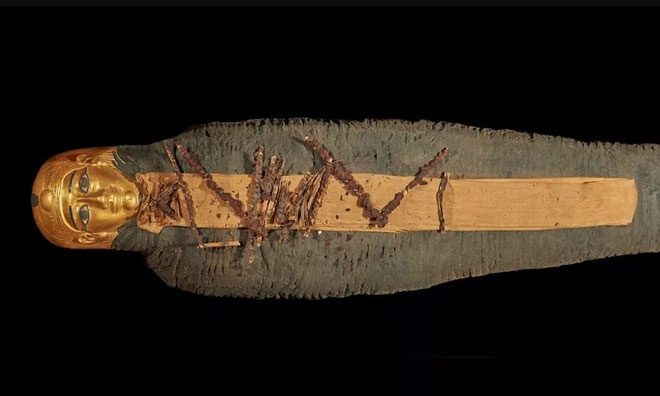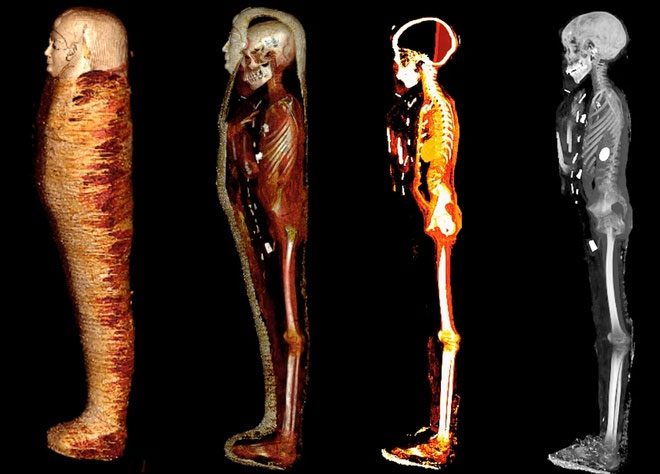Thanks to the use of digital technology, scientists have discovered new details about the teenage mummy famously known as the “Golden Boy” of Egypt.
Researchers at Cairo University, Egypt, utilized computed tomography (CT) scanning to explore the remains of the “Golden Boy” and found 49 valuable amulets buried alongside the body, dating back 2,300 years, according to a report by the Guardian on January 24.

The 2,300-year-old mummy known as the “Golden Boy”. (Photo: S.N. Saleem, S.A. Seddik, M. El-Halwagy).
“Many of the amulets are made of gold, precious stones, fired clay, or ceramics. Their purpose is to protect the body and provide vitality to the deceased in the afterlife,” said Sahar Saleem, a professor at Cairo University and co-author of the study on the “Golden Boy.”
Saleem also told NBC that the remains indicate the boy’s social status and the significant meaning of the amulets within ancient Egyptian belief systems.
“It can be said that the boy came from a very wealthy family, possibly even a noble family,” Saleem stated.
According to him, ancient Egyptian embalmers placed amulets to protect and provide life force to the body. They also placed a gold amulet in the boy’s mouth and a golden scarab beetle on the chest of the remains.
The “Golden Boy” mummy was discovered in 1916 at the Nag el-Hassay cemetery, which was active from 332 BC to 30 BC, in southern Egypt. The mummy has been preserved intact in the basement of the Egyptian Museum in Cairo while awaiting study.

“Golden Boy” through four stages of CT scanning. (Photo: Cairo University).
Experts determined that the boy was approximately 128 cm tall and aged 14-15 based on the structure of his bones and teeth. Scientists have not yet been able to determine the cause of death.
The boy was also buried with a gilded mask and a pair of sandals. “The sandals were probably used to help the boy step out of the coffin. According to ancient Egyptian rituals, the deceased had to wear white sandals to appear pious and clean,” Saleem wrote in the research.





















































